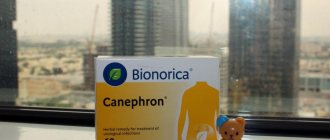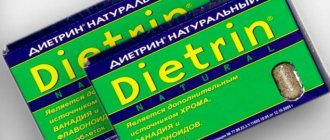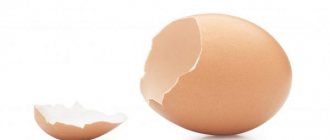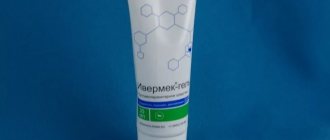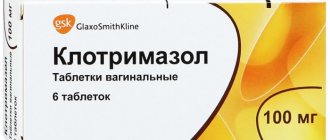What is lichen
Ringworm in cats is an infectious disease. It manifests itself in the form of itching, rash, hair loss, and damage to the claws. The disease is quickly transmitted from cats to other animals and people.
The duration of the incubation period ranges from 2-3 days to 3 months. At this time, the symptoms of the disease have not yet appeared, but the animal is already becoming dangerous to others.
With timely treatment, lichen can be eliminated in approximately 3 weeks. In particularly advanced cases, complete recovery will take about 6 months.
Treatment of pityriasis rosea
At the initial stage, pityriasis rosea in cats looks like a pink spot with clear boundaries and constant peeling. Constant itching causes great discomfort to the cat. In most cases, after a few days the pink spot will be covered with a dry crust.
Such spots tend to spread to other parts of the pet’s body.
Treatment
Since the development of pityriasis rosea is often associated with a decline in the cat's immune strength, treatment is focused on strengthening and maintaining the cat's immunity. Fortunately, this type of lichen does not require special treatment.
Often, all that is needed is to provide the cat with adequate nutrition, which would include a complex of microelements and vitamins. During the treatment of pink lichen, it is strictly forbidden to wash the animal. In addition, it is important to completely protect the cat from sunlight.
Over the course of 1-2 months, this type of lichen goes away on its own.
Causes
Cat ringworm usually appears as a result of a fungal infection of the animal - microsporia (Microsporum) or trichophytosis (Trichophyton).
The fungus gets onto the cat's fur, where it begins to actively multiply. In elderly and weakened animals, the disease spreads very quickly, since their immunity is not able to fight the infection. Ringworm in a kitten is also a common occurrence.
After interacting with sick pets or carriers of infection, the baby will get sick with a 100% probability, because he still has a weak immune system.
Important! Some cat breeds (Scottish, Persian) do not have innate protection against this disease.
Diagnosis of microsporia
Despite the characteristic symptoms, it is not possible to accurately determine microsporia. The fact is that what lichen looks like in cats is how other diseases can manifest themselves. For example, skin mites (demodex). An itchy area covered with a crust may be caused by pemphigus, allergies, pyoderma, or dermatitis. Before treating lichen in a cat, it is important for your doctor to rule out other skin diseases. Therefore, laboratory diagnosis is necessary.
It is possible to cure lichen in a cat only by correctly establishing the diagnosis and using complex therapy.
There are methods specifically designed to determine lichen:
- Wood's lamp. Under the black light of a lamp, some fungi begin to glow yellow-green. However, in 50% of cases the lamp shows a false result. But this method is the cheapest and simplest.
- Study of hairs under a microscope (trichogram). Gives results in 70% of cases.
- Fungus cultivation. A scraping is taken from the animal and the material is placed in a favorable environment. The growth of a fungal colony confirms the diagnosis of microsporia.
These methods complement each other and are often used together.
Varieties of lichen
When you detect the first symptoms of the disease, you need to try to cure the cat’s lichen by any means. But first you will have to find out which of its varieties your pet was infected with.
Veterinarians distinguish the following types of lichen:
- Pink (girdling). This form of the disease is safe for humans. Most experts agree that with reduced immunity, allergies manifest as pityriasis rosea in cats. True, some scientists believe that shingles appears due to the interaction of the animal’s body with a little-studied virus.
- Ringworm in cats develops as a result of a fungal infection and has 2 forms of manifestation: microsporia and trichophytosis. For humans, these forms of lichen are very dangerous. Most often, the infection affects weakened young and elderly cats. The fungus is located on the skin and fur of the pet, where it forms many spores that can survive even in the most unfavorable conditions. For example, spores settle on various surfaces in the room where the cat lives and remain active from 2 months to 2 years. They can live in soil for about 2-3 months, and in already exfoliated skin scales - 5-10 years.
- Weeping (eczema). Ringworm in cats is absolutely safe for humans. Most often it becomes the result of an allergy to food or household chemicals. It can also appear due to serious stress, hormonal imbalances, and parasite damage.
- Multi-colored (pityriasis versicolor). Both cats and people suffer from pityriasis versicolor. It occurs when the Pityrosporum fungus, which is constantly found on the surface of the skin of humans and animals, begins to actively multiply. Most often this happens in the hot and humid season, which is why lichen versicolor has an unofficial name - “sun fungus”.
It is important! A cat can get ringworm from humans.
Analogues and prices
The cost of Terbinafine varies between 500 rubles. for a pack of tablets (30 pcs.) or 200 rubles. per ointment (30 g).
In the absence of Terbinafine, you can use its analogues, among which the following are highly effective in animal therapy:
- "Mikofin." Available in the form of ointments, sprays and tablets. Indicated for the destruction of fungal infections caused by Trichophyton, Microsporum canis and Epidermophyton floccosum, pityriasis versicolor and skin candidiasis.
- "Terbinorm". This drug is presented in pharmacy kiosks in the form of tablets and spray. The medicine is characterized by a strong antifungal effect, expresses fungicidal activity against dermatophytes, molds, as well as dimorphic forms of pathological microorganisms. It also exhibits a fungistatic function against yeast fungi.
The following drugs also have similar antifungal properties:
Before replacing a prescribed drug with any analogue, you must consult a veterinarian.
The antifungal drug Terbinafine is considered an inexpensive and effective treatment for lichen in pets. It is practically free of contraindications and, subject to the dosages prescribed by the doctor, extremely rarely causes adverse reactions. But, in any case, the advisability of its use in each specific case should be determined by a specialist.
What does ringworm look like in cats?
In order to start treatment in a timely manner, the animal owner needs to know the main symptoms of lichen in a cat:
- peeling and change in skin color;
- baldness;
- itching
If you notice signs of lichen in your cat, you should urgently contact a veterinarian, who will determine the type of disease and prescribe the necessary medications.
The main signs of herpes zoster:
- The appearance of pink spots of different sizes on the pet’s body. They resemble the rash of allergic reactions. Most often, these rashes are located in the groin, abdomen, or inner thighs.
- Itching is mild or absent altogether.
- The spots peel only in the center, their edges are smooth.
- When a secondary infection occurs, there is an increase in temperature, enlargement of the lymph nodes, and pain in the joints.
Ringworm will look like this:
- First, a small rash and severe itching appear.
- Then, flaky, round spots appear at the sites of the rash and scratches.
- The fur falls out and the red skin is exposed.
- Gradually, the spots increase in size and become crusty. The fur in their place is completely absent and does not grow back after treatment.
It is important! Depending on the type of pathogen, lichen affects the entire body of the cat (microsporia) or only the head and ears (trichophytosis).
Ringworm in a cat is expressed by the following symptoms:
- The appearance of red spots, sometimes very painful and hot.
- Fluid-filled blisters form on the affected areas.
- At the sites where the vesicles rupture, wounds appear, which often become infected and, as a result, suppuration occurs.
- Sometimes body temperature rises.
Lichen versicolor can be recognized by the following signs:
- The initial stage is characterized by the appearance of small oval spots on the skin. Their boundaries are clear, and the color is yellowish, pink, brown.
- Gradually there are more spots. They unite with each other, become crusty and peel off.
- Hair falls out on the affected areas.
- Claws become deformed if fungus gets into them.
- No itching.
How to cure pityriasis versicolor?
Pityriasis versicolor is extremely contagious for both humans and other animals. It often begins as a small oval spot with a color that can range from pale yellow and pink to brown.
Subsequently, the spots quickly spread throughout the cat's body, merging together.
Treatment
Treatment of pityriasis versicolor requires a competent and responsible approach, therefore, if the first symptoms of the disease appear, you must urgently contact a veterinarian.
In the treatment of this type of lichen in cats, products containing enilconazole are used, for example, Imaverol. In severe cases, treatment of the cat with Lime Sulfur is prescribed.
Diagnosis of the disease
Only a veterinarian can recognize the disease, who will examine the cat and prescribe the necessary treatment. It is possible to determine lichen in a cat using one of the methods for diagnosing the disease:
- Isolation of an infectious agent in an environment that promotes its development. This diagnostic method is considered the most accurate. True, the study can take a long time - from 1 to 3 weeks.
A scraping from the surface of the animal's skin is placed in a special composition, where favorable conditions are created for the propagation of the pathogen. First, they simply observe it, and then study the grown microflora under a microscope.
- Examination of hair or skin scrapings under a microscope. This method is not as accurate as the previous one. It is not always possible to see the causative agent of a disease under a microscope. It often happens that this type of test gives a negative result for infected cats.
- Study using a Voodoo fluorescent lamp. This method is considered the least effective, and its results do not guarantee 100% reliability. Areas affected by lichen are highlighted in green. True, some harmless microorganisms glow, but fungi do not always glow in ultraviolet light.
It is important! If lichen is suspected, blood is taken from animals for laboratory testing.
Application and dosage
Treatment for onychomycosis can last from six to twelve months. In cases of severe infection, surgical declawing may be the only effective method of getting rid of the fungus.
Instructions for use of Terbinafine for cats contain information that treatment lasts approximately four to six weeks and is stopped only after a negative test result for a fungal infection is obtained. This is important because even if there are no symptoms of the disease, it can be positive.
The cat is considered recovered only after receiving a second negative culture result for the fungus four weeks after the end of the course of treatment with the drug. This is explained by the fact that in the 1st study, the negative result was due to the persistence of Terbinafine in the skin fragments and hairs that were taken for analysis.
In practice, repeat analysis is rarely done, as cat owners refuse to have it performed.
Terbinafine tablets for cats should be used in a dose of 20 to 30 mg per 1 kg of animal body weight once a day, a little later - every other day. The duration of treatment averages 32-34 days. It is recommended to give the drug to the cat during feeding.
Small kittens that may be harmed by the tablets should be treated externally, lubricating the affected areas with ointment or cream. The duration of treatment depends on the pet’s immunity - the stronger it is, the shorter the course will be.
Terbinafine is the best option for a drug used to treat microsporia in pets. In any case, treatment should be selected by a veterinarian based on the individual characteristics of the cat, the degree of advanced disease, the age of the animal and test results.
How to treat ringworm in a cat
Remedies for lichen in cats, taking into account the type of infection, can only be prescribed by a veterinarian.
Drugs
To prevent and treat ringworm, special antifungal vaccines are used:
- Polivac;
- Microderm;
- Vakderm.
With them, a fungus is introduced into the body, which is perceived as a foreign body. As a result, the animal develops immunity against the fungus, which destroys the infectious agent. The vaccine is administered 2 or 3 times, depending on the age and health of the pet.
The vaccination can be given to kittens older than 3 months. If there are several cats living in a house, and one of them is sick with shingles, be sure to vaccinate the remaining healthy pets.
The most effective anti-lichen tablets for cats are Griseofulvin, Itraconazole and their analogues. These are “human” drugs, but with their help you can remove lichen from a cat. Only a veterinarian can prescribe these tablets to animals and calculate the dosage.
Ointments and shampoos
In addition to using products for internal use, you can treat lichen in a cat using antifungal ointments and shampoos. Veterinarians recommend using these drugs in combination with tablets. Ointments are applied 2-3 times a day, and shampoo is sufficient to use 2-3 times a week.
The most effective ointments for lichen:
- Miconazole;
- ichthyol;
- salicylic;
- sulfuric;
- Yam ointment
Antifungal shampoos are excellent for treating ringworm in cats. Apply the product to the coat, leave for 3-5 minutes, then foam and rinse thoroughly.
It is important! It is strictly forbidden to wash a sick cat with dog shampoo or soap. Such hygiene products provoke the rapid spread of infection.
Treatment options
To treat dermatophytosis, you need to consult a veterinarian, since an unknowing person may confuse the disease with other skin lesions. The doctor will examine the pet and analyze the appearance of the fur under the light of a Wood's lamp - a device that illuminates fungi in green. If this is not enough, blood and urine tests are prescribed.
Vaccines
At an early stage of the disease, vaccines against dermatophytosis are used. They eliminate small foci of lichen and protect the animal’s body from re-infection for 1 year. The preparation contains small doses of different types of fungi. After their administration, immunity to the effects of the pathogen develops.
The injection is given in the thigh area. The veterinarian selects a drug from 6 options - Mikkanis, Vakderm, Vakderm-F, Microderm, Multikan-7 and Polivac-TM. Dermatophytosis disappears after the second injection, and less often a third is required.
Systemic drugs
If the disease is advanced and large areas on the animal’s body are affected by dermatophytosis, systemic antifungal drugs are used for treatment - Fulcin, Gricin, Biogrizin. The tablet should be given to the pet along with food, preferably fatty. During treatment, your pet often experiences side effects - vomiting, loss of appetite, diarrhea.
Therapy lasts 7-12 days. To make it more effective, the pet's fur is completely shaved and burned. The dosage of the drug is determined by the doctor. It can range from 20 to 150 mg per 1 kg of animal weight. The daily dose is divided into 2 doses.
Complete hair removal increases the effectiveness of the entire treatment, since the migration of fungal spores is more difficult.
Pills
To treat dermatophytosis in dogs, antifungal agents intended for humans are used - Fluconazole, Diflucan, Flucostat, Terbinafine. These medications must be given to your pet according to the veterinarian’s instructions; treatment lasts from 6 to 12 weeks.
According to reviews from dog breeders, the doctor usually prescribes Fluconazole. This drug is excreted almost unchanged through the kidneys (all other antifungal drugs are excreted through the gastrointestinal tract). Fluconazole should be given to a dog at a rate of 10-20 mg per 1 kg of weight. There should be 2 applications per day, preferably 12 hours apart.
Terbinafine is given once a day at the rate of 20-30 mg per 1 kg of dog weight. After eliminating the foci of dermatophytosis, the drug is continued to be used, but only every other day.
External means
External skin treatment is used only as part of complex therapy - there will be no benefit from the single use of ointments or solutions. For animals, such means are less important than for people.
Preparations for external use:
- lime sulfur solution (2%);
- povidone-iodine;
- enilconazole solution (2%);
- Miconazole (2%) in gel and spray form;
- a mixture of 10% salicylic acid solution and 5% iodine tincture (1:1);
- ointment "Yam";
- salicylic ointment (5-10%).
It is necessary to treat not only the lesions, but also the space around them within a radius of 6 cm, since fungal spores migrate. Movements should go from the edge to the middle so that the disease does not spread to healthy areas. Treatment lasts 5-10 days.
A disinfectant should be used simultaneously with local solutions and ointments. Formaldehyde spray (3-5%) is applied to the entire coat, including healthy areas. After this, the dog is combed once against the coat and according to its growth.
The pet must be bathed using antifungal shampoos and solutions containing Chlorhexidine. During procedures, the dog is interacted with only wearing medical gloves.
Additional measures
To prevent the spread of pathogens, it is necessary to regularly treat the premises where the dog is during the entire treatment course. Surfaces are vacuumed, then washed with bleach or formaldehyde. This removes hair and skin flakes contaminated with spores.
If you have several animals, then sick and healthy animals should be separated until the outbreak of dermatophytosis passes. Uninfected pets are regularly bathed with an antifungal agent and vaccinated.
Traditional methods
Folk remedies are also effective for treating lichen in cats at home. True, this should be done at the very beginning of the disease.
It is possible to treat lichen in a cat at home using the following methods:
- Iodine. Lubricate the affected areas 2 times a day - morning and evening.
- Alcohol and aspirin. An aspirin tablet is crushed and mixed with 2 tablespoons of alcohol. Use this remedy once a week.
- Herbal decoction: 1/2 teaspoon of dried leaves of string, violet, oregano and nettle are mixed and poured with 1 cup of boiling water. The resulting decoction is infused for 20 minutes, filtered and given to the cat before feeding in the morning, lunch and evening.
- Tea tree oil and olive oil. You need to mix 3 drops of essential oil with 1 tablespoon of olive oil and treat the affected areas with this mixture.
- Lemon juice is mixed with olive oil. The resulting product should be anointed on the affected areas of the body 4 times a day.
Indications for use of ointments
Ringworm has a viral or fungal etiology. The last option is more common. Ointments of different types can be used to treat any type of lichen, except pink. No specific therapy has been developed for it. This type of lichen is identified by multiple pink spots on the body. Over time, they acquire a yellowish tint. Folds appear in the affected areas.
The ointment helps cure the most common type of lichen - ringworm. It is not difficult to identify it at home. An inspection is sufficient for this. A fungal infection affects the muzzle, the area behind the ears, and limbs. In some areas, the skin becomes bald, covered with scales, and peels off.
Prevention
To prevent the disease, you should follow simple recommendations:
- Do not allow your pet to interact with stray animals.
- Clean the apartment daily using various disinfectants.
- Be sure to treat your cat for all parasites.
- Visit the veterinarian regularly and get vaccinations.
What do veterinarians prescribe?
To treat lichen in cats, veterinarians prescribe medications such as ointments, sprays, emulsions and shampoos. If the disease is advanced and external remedies do not help, the doctor may prescribe pills and injections. These drugs are toxic and can harm the animal’s liver, so they are used only as directed and under the supervision of a specialist.
Among the ointments that are sold in specialized stores are:
- Sulfuric ointment;
- salicylic ointment;
- Mycozone;
- Clotrimazole;
- Mycoseptin;
- Sanoderm.
Among the solutions, Fukoricin and Imaverol are popular; they are used until complete recovery. Sebozol and Nizoral shampoos can be used to bathe animals during treatment.
How to protect yourself and your household
A pet with shingles needs to be treated urgently. You should also take all possible measures to avoid infecting people:
- Bed linen and clothing should be washed and hot ironed frequently.
- All surfaces in the room should be washed daily using disinfectants.
- Your cat's bed and other grooming items should be washed regularly in hot water.
- It is necessary to ventilate the room frequently.
- When treating affected skin areas of animals and people, disposable gloves should be used.
Avoiding infection with lichen is very simple - you need to remember to vaccinate your pet and follow the rules of hygiene. If your cat does get sick, it is important to start treatment immediately after the first symptoms appear. This is the only way to quickly get rid of the infection and protect others from possible infection.
Description and properties of the drug
Terbinafine is a drug belonging to the allylamine group. The drug has a wide spectrum of action, but is most often used in the treatment of dermatomycosis and is effective against pathogens of onychomycosis.
© shutterstock
Terbinafine is available in the form of cream, ointment and tablets; the main active ingredient in them is terbinfin, which allows you to relatively quickly cope with a fungal infection.
Terbinafine cream and ointment for cats is white in color and has a viscous, homogeneous consistency and is intended exclusively for external use.
The tablets are flat-cylindrical, white, scored and chamfered on one side.
Rules for the treatment of deprivation:
- Isolation of the cat. To prevent the spread of lichen spores around the house and infect people, the cat needs to be given a separate room. A sick animal is prohibited from lying on upholstered furniture and beds. To achieve maximum effectiveness of treatment, you should shave the affected areas on the cat’s body, taking 2-3 cm of healthy skin around the source of infection. If the lesion is too extensive, the fur must be shaved off completely. Instruments used for this purpose should be disinfected immediately after use or disposed of, otherwise they will serve as a source of fungal spread.
- Home disinfection. The place where a sick cat lives must be cleaned with water and a chlorine-containing disinfectant dissolved in it.
- Cat skin care. Areas affected by the fungus should be “laminated” or “terbizated” - treated with a medicinal product. During the healing process, crusts appear on the wounds, which need to be removed twice a day with soapy warm water. It is recommended to burn shaved fur and dead tissue.
To avoid re-infection with the fungus, the cat is given a prophylactic vaccination with Polivac or Vakderm.
